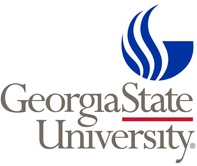By working to dismantle those barriers, we’ve had six years in a row where our African American, Latinx, and Pell students have graduated at or above the rate of the student body overall. It’s not some kind of magic formula; what we’re doing is delivering personalized, individualized support for students at scale on a day-to-day basis.
Dr. Tim Renick, executive director, National Institute for Student Success
Challenge
Overcoming A History Of Inequality
Little more than a decade ago, Georgia State University was still struggling to escape a dark legacy. Since desegregation in 1962, the demographics of its student population shifted dramatically, from 75% white in the 1980s to 77% non-white today—but outcomes for African American and Latinx students were still bleak, with graduation rates hovering just above 20%.
Today, that picture has changed completely. Overall, the graduation rates have risen by 70%, and GSU is one of the few institutions in the world helping solve the equity problem. At GSU, they continue to ensure that all students are fully supported and help remove barriers that might otherwise prevent graduation.
Dr. Tim Renick is a tenured professor at GSU and executive director at the National Institute for Student Success—an organization that aims to communicate the lessons learned over the past decade at GSU to other educational institutions to help them solve the same problems.
He explains: “At GSU, we’ve found that barriers in admissions, financial aid, registration, advising, and communication processes are devastating for student progression and completion rates. But more than that, these administrative barriers disproportionately impact students from underserved backgrounds. They’re a major source of equity gaps.”
GSU’s strategy acknowledges the difficulties that students face and makes support the default, not the exception.
“We know that navigating college is incredibly complex and the stakes are high, both financially and otherwise,” says Dr. Renick. “We know that students are going to run out of money, especially if they’re adult learners or they’ve exhausted their financial aid. We know that students at times are going to pick the wrong majors and register for the wrong courses, because it happens every semester. So why don’t we design systems to expect those things to happen and respond accordingly, instead of allowing ourselves to be taken by surprise?”

Solution
Harnessing Data To Make A Difference
GSU’s transformation has been built on a foundation of data and analytics. Over the past decade, the student success program has used evidence-based methods to implement large-scale interventions to give students the personalized support they need.
At first, the information used to guide these interventions mainly came from GSU’s student information system (SIS), which provides insight into students’ finances, course choices and academic progress. But over the past two academic years, the student success team realized it needed finer-grained data on student activity and engagement. In collaboration with GSU’s SIS, the university’s learning management system (LMS), D2L Brightspace, provided the perfect source for this additional information.
Dr. Renick comments: “As an institution, we’re committed to big targets, such as raising the graduation rates by a certain number of points over the next several years, eliminating equity gaps, and so forth. But to move those numbers, we need to monitor and improve dozens of proximate metrics that are early indicators.” With D2L Brightspace, advisors can identify students at risk and provide the additional support needed to keep them engaged and on track.
For example, when COVID-19 struck in 2020 and GSU pivoted all its courses to a fully online model, data from D2L Brightspace gave GSU vital insight into the impact on student success. For established students, who were already acclimatized to academic life at GSU, the switch to an online modality had a net positive effect—graduation rates went up by three percentage points during the pandemic.
“About 80% of Georgia State students work, and many are also parents or have other obligations,” says Dr. Renick. “Using D2L Brightspace to deliver classes at scale online means they don’t have to commute to downtown Atlanta through the traffic. So, while the pandemic created a lot of challenges, the online modality may actually have helped the performance level and participation levels for our existing juniors and seniors.”
Diagnosing First-Year Difficulties
However, for the new cohort of students who enrolled for their first year at GSU during the pandemic, their experience revealed a different story. The student success team noticed a worrying trend that log-on rates for the new first-years were much lower than those of established students.
“We used that data to guide targeted interventions—we had 30,000 instances where advisors reached out to students because they weren’t logging on to the LMS,” says Dr. Renick. “Even so, we ultimately saw a significant increase in non-pass rates for first-year students in critical classes like introductory math and English composition.”
The student success team didn’t let it go. They set up a new summer program that provided support for 600 first-year students to retake the courses they had failed. Of those students, 400 students gained grades of C or above the second time around, putting their studies back on track before the start of their sophomore year.
“In fact, around 100 of the students got an A grade in the courses they had previously failed,” says Dr. Renick. “That’s a sobering statistic because it shows just how devastating the impact of the pandemic was for even the most academically capable new students.”
After a year and a half of using D2L Brightspace on a day-to-day basis, faculty now are making much greater use of the LMS, even in face-to-face or hybrid courses,” comments Dr. Renick. “As a result, they’re producing better data for us on student activity and engagement, which helps us provide even better support for our students.
Dr. Tim Renick, executive director, National Institute for Student Success
Results
Empowering Students To Make Better Decisions
Today, GSU has pivoted 80% of its courses back to having some level of face-to-face contact—but the legacy of the pandemic has had a positive effect on the adoption of online learning by both faculty and students.
The student success organization has gained a deeper understanding of the challenges that students face. As a result, the team is better able to design support services that address those challenges proactively, rather than scramble to respond when students are already in difficulties.
“It’s not just that this information provides powerful tools to faculty and administrators,” explains Dr. Renick. “What’s underappreciated is that it also provides critical information to students. For example, we now know that if a student takes calculus and organic chemistry—two very difficult courses—in the same semester, their chance of passing both courses is around 60%. Whereas if they take them in separate semesters, that chance rises to around 80%. If we can give them that knowledge when they’re registering for courses, we can help them make good choices.”
He concludes: “We’ve always collected data about attendance, registration, grades, and so on in our LMS and our SIS—the difference is, we’re finally using these data to empower our students to make more informed decisions. And at the same time, we’re giving our staff the ability to be much more targeted and efficient with the limited time they have every day to support students.”

